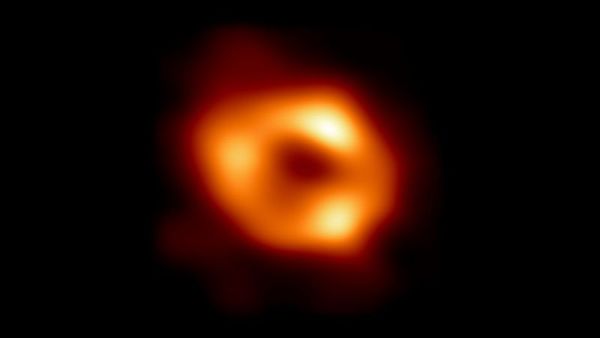
The supermassive black hole at the center of our galaxy, Sagittarius A*, has recently been discovered to spin rapidly and affect the very fabric of space-time surrounding it. This groundbreaking finding comes from a study conducted by a team of physicists using NASA’s Chandra X-ray Observatory, which specializes in detecting X-ray emissions from hot areas of the universe.
So, what does this mean exactly? Well, space-time is the concept that fuses time and space together to create a four-dimensional continuum. It describes how we perceive the fabric of the universe, which can curve and bend in response to the presence of massive celestial bodies. In this case, the spinning black hole is causing what is known as the Lense-Thirring effect or frame dragging, where it drags space-time along with its rotation.
Lead study author Ruth Daly, a physics professor at Penn State University, explains that this phenomenon squishes down the space-time around the black hole, resulting in an asymmetrical shape resembling that of a football. But fear not, this alteration of space-time is actually quite fascinating and has significant implications for astronomers studying galaxy formation and evolution.
The team used a method called the outflow method, which examines radio waves and X-ray emissions from the accretion disk, the material and gases surrounding the black hole. With this method, they were able to calculate the rotational speed of Sagittarius A. Previously, there was no consensus on the spin of this black hole, but now it is believed to have a spin angular momentum value between 0.84 and 0.96. In comparison, a black hole in the Virgo galaxy cluster called M87 was found to be spinning at the maximum value of 1.
Interestingly, Sagittarius A‘s higher spinning rate is not due to a higher spin angular momentum, but rather because it has less distance to travel in one rotation compared to M87. The mass and spin of a black hole provide vital clues about its formation and evolution. In the case of Sagittarius A*, its high spin value suggests that a significant portion of its mass came from the accretion of surrounding gas.
Understanding the properties of the central black hole in our galaxy is crucial for unraveling the history and structure of the Milky Way. It allows scientists to test theories and explore the possibility of intriguing objects like wormholes. Dejan Stojkovic, a professor of cosmology at the University at Buffalo, emphasizes the importance of measuring and studying the properties of Sagittarius A* to gain insight into our galactic history.
In conclusion, the discovery of the spinning black hole at the heart of our galaxy is not only a remarkable achievement but also a key to unlocking the mysteries of the universe. By observing and understanding the role of black holes, scientists can deepen their knowledge of galaxy formation and evolution, providing a better understanding of our place in the cosmos.




